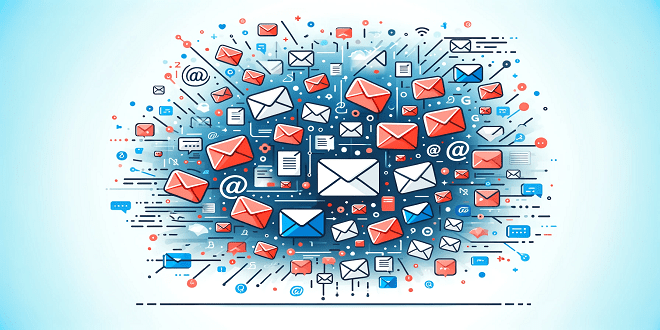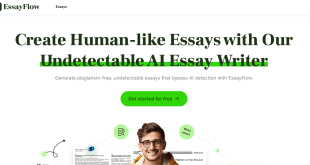Email automation is a potent tool in the marketer’s toolkit, offering the ability to send the right message to the right person at the right time. By automating your email campaigns, you can save time and create more personalized and effective communication streams that resonate with your audience. To harness the full potential of email automation, let’s explore some email automation best practices that can help you enhance customer engagement and drive your business forward.
Follow Up On Customer Behavior
Understanding and responding to customer behavior through email automation best practices is a key strategy in personalizing communication. The crux of this approach lies in its ability to make each customer feel uniquely attended to based on their interactions with your brand. Tailoring your email content based on customer behavior is a powerful way to enhance relevance and engagement.
- Implement triggers such as website visits, product views, or previous purchases to send relevant emails.
- When a customer views a product but doesn’t purchase it, send them a reminder or additional information about the product.
- After a purchase, automate an email that asks for customer feedback, showing that you value their opinion.
Choose An Easy-To-Set-Up Email Automation Stack
Selecting an email automation platform that is straightforward to set up and use is crucial for ensuring the smooth operation of your email marketing strategy. A user-friendly email automation stack not only streamlines the campaign setup process but also makes it easier for your team to manage and optimize these campaigns over time. By choosing mass mailer software from Atompark you can easily work through the best practices of email marketing. It will also help you scale your advertising campaigns. You will have a 7-day trial period during which you will be able to explore all the features of the tool.
Build Follow-Ups In Your Automated Campaigns
Creating a series of follow-up emails can maintain engagement and drive customers further down the sales funnel. Here are some email content best practices for follow-ups:
- After a customer subscribes, send a series of welcome emails that introduce your brand and set the stage for future communication.
- After purchase, send follow-up emails that provide additional value, such as tips on using the product, complementary products, or loyalty program details.
- For customers who haven’t interacted with your brand in a while, send a series of re-engagement emails to recapture their interest.
Use Email Automation To Deliver Other Forms Of Content
Incorporating follow-ups in your automated email campaigns is akin to nurturing a growing plant; it requires regular attention and care to flourish. The essence of effective follow-up sequences is to keep your brand at the forefront of your customer’s minds, gently guiding them through the various stages of their journey with your brand.
- Automate regular newsletters that provide informative content, industry news, or company updates.
- Send automated emails that educate customers about your industry or how to get the most out of your products or services.
- Use email automation to promote upcoming events, webinars, or special occasions, providing all the necessary details and a CTA to register or participate.

Prompt 1:1 Conversations, Purchases, Or Other Immediate Actions
Leveraging email automation for business with a diverse range of content opens a world of opportunities for engaging with your audience beyond traditional sales pitches. This strategy involves curating and distributing various forms of valuable content directly to your subscribers’ inboxes.
- Regular newsletters that provide industry insights, company news, or practical tips can keep your audience informed and engaged. Sharing blog post digests can drive traffic to your website while educating your audience about topics relevant to their interests.
- For B2B businesses, distributing case studies or white papers through automated emails can position your brand as an industry thought leader and provide valuable resources to your clients.
Additionally, automated emails are an excellent way to promote events or webinars, ensuring your audience is always in the loop about upcoming engagements. By varying the type of content you deliver through automation, you cater to a broader range of subscriber preferences, keeping your audience engaged and connected to your brand in multiple ways.
Leave being a ‘Creep’ to Radiohead And/Or TLC
When you automate email campaigns, personalization needs to be balanced carefully with respect for privacy. It’s vital to use customer data ethically and responsibly, ensuring that you’re not overstepping boundaries and making your customers feel uncomfortable or watched. This means avoiding overly invasive tracking or using data in ways that customers have not explicitly consented to. Transparency is key; make sure your customers know what data you’re collecting and how you’re using it. Additionally, offer them easy options to control their privacy settings and opt-out if they choose. By respecting customer privacy and focusing on subtle yet effective personalization, you can maintain trust and a positive relationship with your audience.
Focus On Your Priorities As A Business
Your email automation should reflect and support your broader business goals. Whether it’s increasing sales, improving customer retention, or building brand awareness, your email automation strategy should be aligned with these goals. Learn some business email best practices and regularly review the performance of your email campaigns against your business objectives. Use metrics like open rates, click-through rates, and conversion rates to gauge success and guide adjustments.
Conclusion
Email automation is much more than a set-and-forget tool. It requires thoughtful planning, a deep understanding of your customers, and a constant drive to provide value. By following these best practices in marketing automation, such as following up on customer behavior, building strategic follow-ups, diversifying content delivery, encouraging immediate actions, choosing the right tools, respecting customer privacy, and aligning with business goals, you can create an email automation strategy that not only engages but also delights your customers. Remember, the ultimate goal is to build lasting relationships with your customers, and email automation is a powerful tool to help you achieve just that. The key is to be timely, relevant, and customer-centric in all your email communications.
 Naa Songs
Naa Songs




